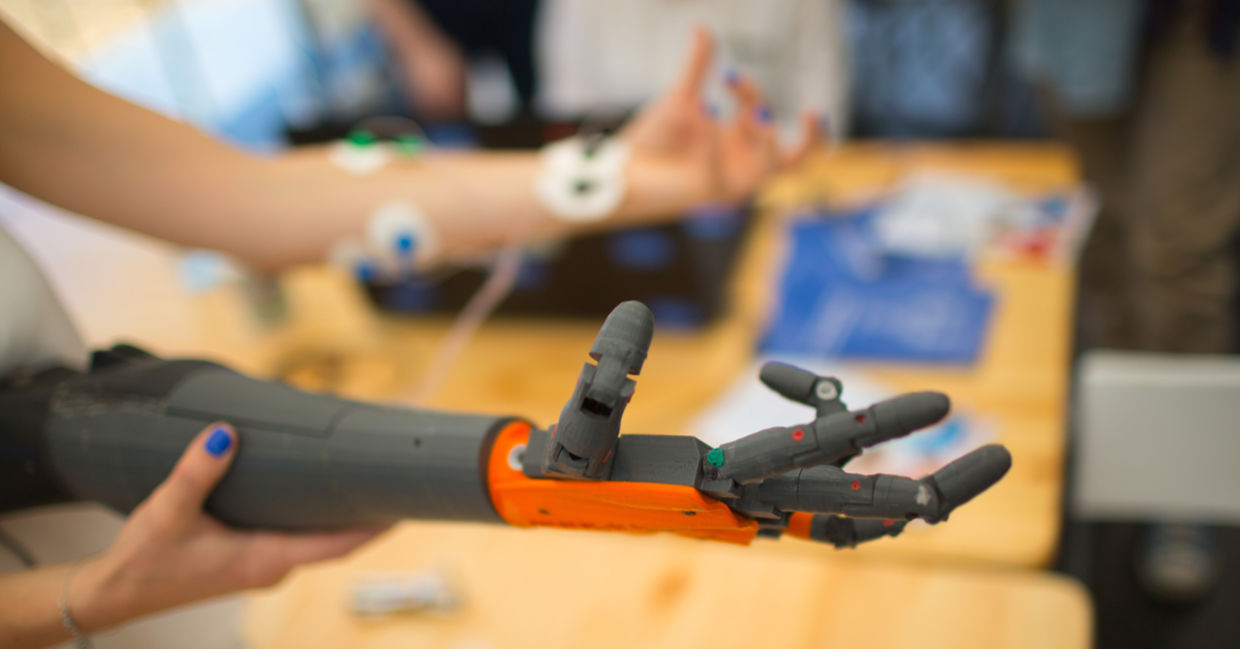
(Max4e Photo / Shutterstock.com)
Inventors and creative minds alike have ignited their innovative sensibility with these four incredible gadgets that are enhancing the wellbeing of people with disabilities.
1. UPSEE
Debby Elnatan’s son Rotem was born with cerebral palsy, leaving him unable to walk. Elnatan took matters into her own hands with the creation of the Upsee.
HOW IT WORKS: A belt that is fastened around an adult’s hips, and a harness that secures a young child with two shared sandals that allow the adult and child to walk together. The Upsee is intended for children ages one to eight with motor impairment.
INNOVATION: Allows for a hands-free and independent experience for both the adult and child, allowing formerly immobile kids the ability to stand upright, move and play.
2. LECHAL
Eye surgeon Anthony Vipin Das and his team came up with the idea to use haptic technology, which uses vibration, force or movement to communicate via the sense of touch, to create shoes that allow visually impaired people complete mobility.
HOW IT WORKS: An insole that can fit into any shoe plus a GPS enabled smartphone, guides users with a series of vibrations that indicates to them what direction to walk.
INNOVATION: Visually impaired people can move around with confidence and security as their shoes and programmed GPS technology will take them to their desired destination. Geared to a wide audience, for every purchase of a pair of LECHAL footwear, the cost of the insoles will be subsidized for a visually challenged individual.
3. VIBERING
Designed by South Korean creators Kwang-seok Jeong, Min-hee Kim and Hyun-joong Kim, Vibering is a watch with two rings (one to be worn on each hand) that vibrate according to the distance and position of sound.
HOW IT WORKS: The watch and rings sense sounds, particularly vehicles, and vibrate with varying intensity depending on how close the user is to the sound.
INNOVATION: The fashionable and inconspicuous watch and rings are a great safety measure for keeping hearing impaired individuals out of harm’s way.
4. MOBILE LORM GLOVE
For people who are deaf and blind, communication is primarily done through hand-touch sign language known as Lorm. A prototype of a sensor filled glove which translates Lorm into text messages and emails and vice versa is being developed at Berlin's Design Research Lab.
HOW IT WORKS: Small vibrating motors located on the glove allow the wearer to perceive incoming messages, and a Bluetooth module manages the data transmission between the glove and the smartphone of the user.
INNOVATION: The glove is a breakthrough in opening up the lines of communication for the deaf-blind. Individuals do not have to only rely on touch, but can send messages over distances to other glove-wearers or to smartphones, allowing them greater independence and the ability to speak with more than one person at a time.






